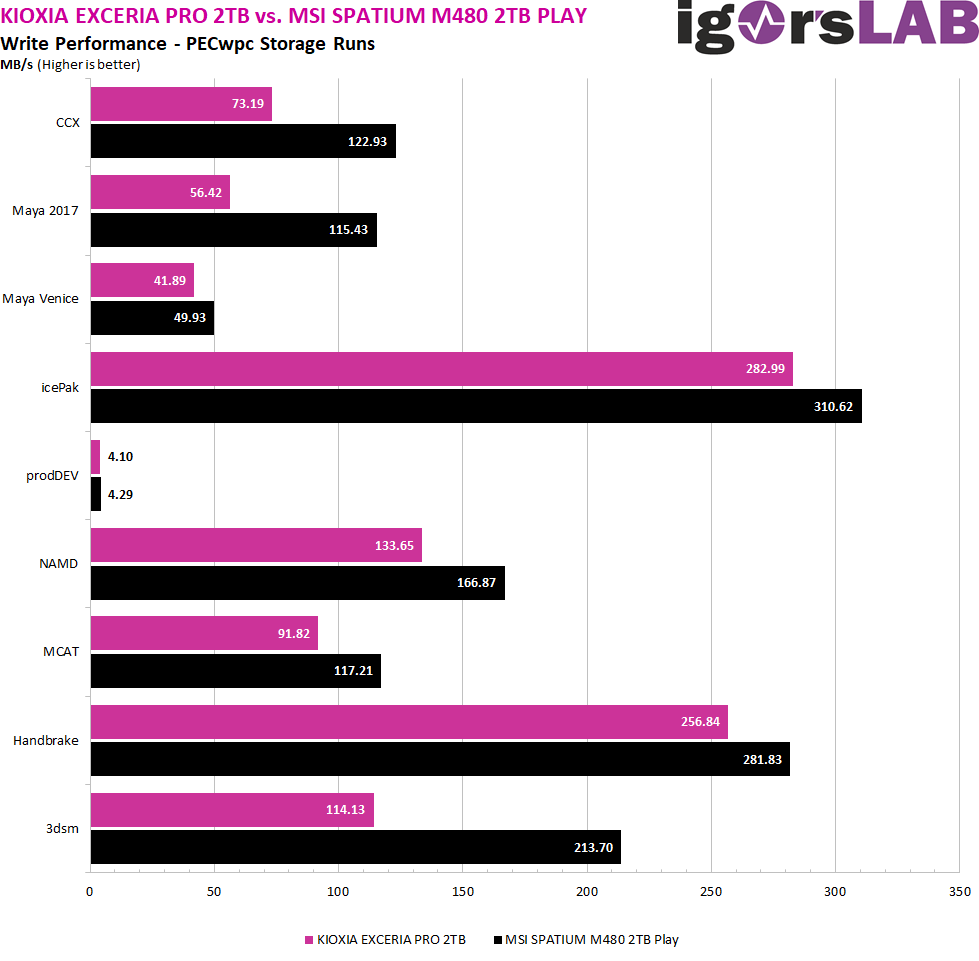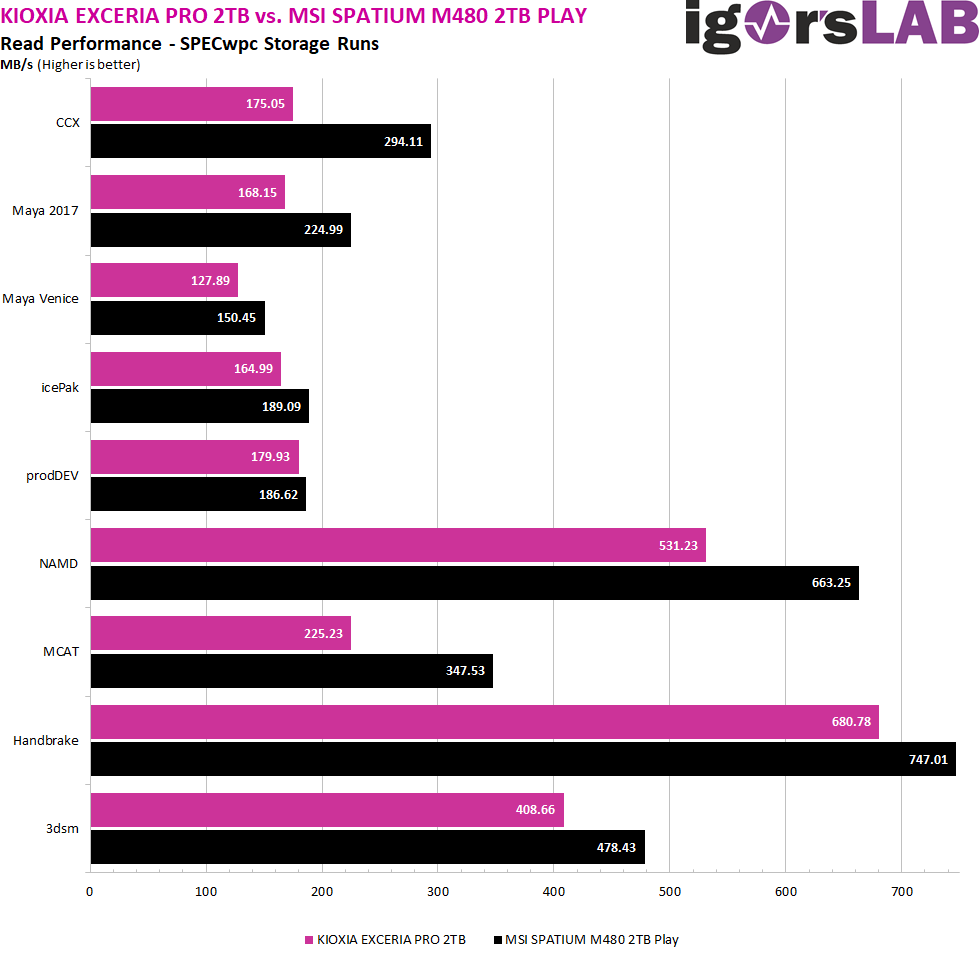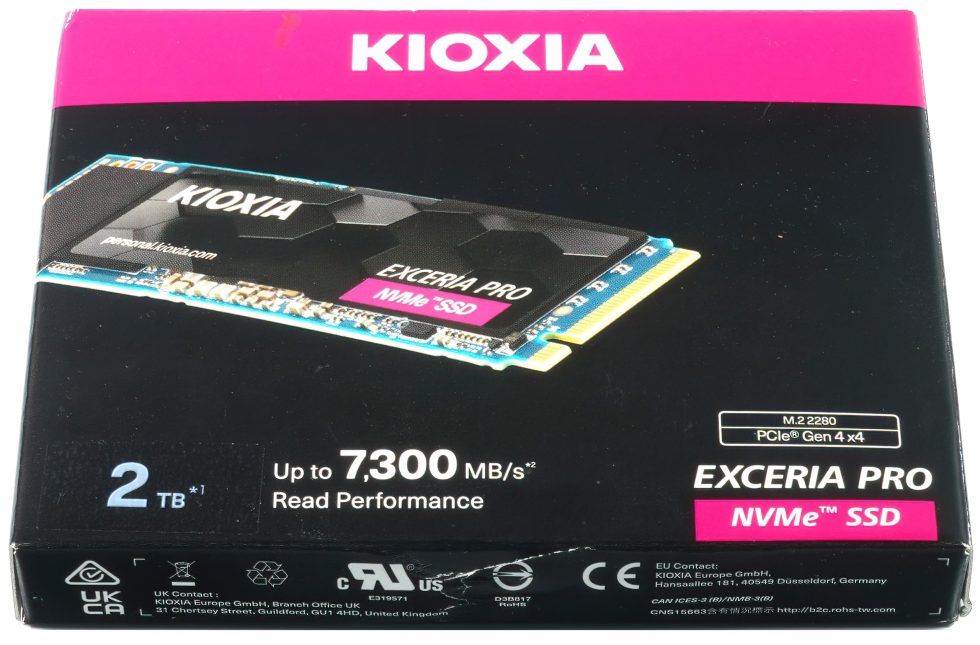We now come to the direct comparison of the two tested SSDs. The following benchmarks show some astonishing things, where the KIOXIA EXCERIA PRO has to let up in every benchmark. Unfortunately, the limited interface is quite noticeable here, although it is still faster than with a PCIe 3.0 SSD. But it could also be faster, and unfortunately you lose valuable points with the BiCS5.
Reading is very similar, although the differences are not quite as stark. However, we also see that testing with synthetic programs is rather useless when it comes to everyday applications. Then the KIOXIA EXCERIA PRO is even a tad slower when reading. Despite best possible cooling to below 50 °C under permanent load with the active SSD cooler.
Yes, the performance in the applications looks different than the synthetic benchmarks might suggest. However, you really have to consider whether you really feel it subjectively and whether it really influences productivity in the individual case to such an extent that you have to discuss the price. If you don’t want to fail benchmarks, but want to work or play comfortably, you will certainly do everything right with the new SSD from KIOXIA. But it also really depends on the applications. Synthetics are not everything.
Summary and conclusion
As far as the conclusion is concerned, I am somewhat ambivalent and that is also somewhat due to the price. Because as long as I can buy, for example, a Kingston KC3000 PCIe 4.0 NVMe SSD 2TB for under 290 Euros from a trustworthy retailer, the 294 Euros for the somewhat slower KIOXIA EXCERIA PRO is not really a grandiose offer. Both come with a 5-year warranty and rely on the same controller and similar equipment. However, the Kingston SSD is the only one that can really keep up with the P/L ratio here. The cheaper models starting at about 250 Euros either rely on the older BiCS4, optionally also slower controllers or go over the counter as Samsung OEM models, which are not really faster either.
If it weren’t for the SSD from Kingston, which also makes life extremely difficult for the MSI SPATIUM M480 2TB Play in terms of price, then one could even have written about a cheap 2 TB entry with PCIe 4.0. As it is, however, it is neither a review, nor a true recommendation. Let’s put it this way: Not bad, but a bit out of time. Or else 15 to 20 euros too expensive. One of these options should fit.




































8 Antworten
Kommentar
Lade neue Kommentare
Mitglied
Urgestein
1
Mitglied
Urgestein
Veteran
Urgestein
Urgestein
Alle Kommentare lesen unter igor´sLAB Community →